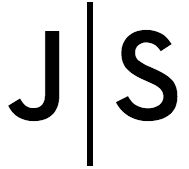This week’s first reading was a chapter on Tutor and Writer Identities, written by Lauren Fitzgerald and Melissa Ianetta. We have had previous readings from these authors, such as “Tutoring Writing in and Across the Disciplines”. Based on the formatting, of “Tutor and Writer Identities” I would guess that it is from the same book and thus is likely to reflect similar ideals. It begins by talking about what identity is, and how it is a fluid concept rather than a fixed one, and how this identities of both tutor and writer impact their relationship, which then influences their resulting sections. If the identities of the tutor and writer are different, it can be different to facilitate a session because relating to someone is a useful tool in tutoring. However, I think that our job as tutors is to work around these difficulties and to remember that what works for one student may not work for another and that we must adapt. This has been a theme that has come up in many of my blog posts, so I have been implicitly emphasizing the importance of understanding the various identities of those involved with tutoring.
Identity can have serious impacts on the tutoring session. The writers note that it can cause communication difficulty, which makes sense. I, for instance, learn really well through examples. Because of this, I frequently find myself tutoring through example, but I have to be able to see when that is not working and I have to have something to fall back on. This is where it becomes important to strategize. This week’s reading was helpful because it gives various strategies for tutoring across identities.
Like the others, this week’s reading presented a problem and then have presented different strategies to work around this problem. The writers identify (no pun intended) various strategies to get through to readers. They writers also note that there are multimodal tutoring strategies, such as in table 5.2 (page 117). I found this table to be particularly useful because it has a bulleted list of various categorized strategies, like visual versus kinesthetic versus auditory. I thought this reading was also overall very useful because it gives us as future tutors concrete steps to heighten communication between ourselves and our clients, even if our writing identities should differ.
This week’s second reading was “Defensive Responses to Postmodern Change” by Nancy Maloney Grimm. This piece was structurally different than many of the others we have seen so far, and at first the fact that it was not split up made it hard to read. However, I eventually grew to enjoy this reading more than many of the others. This piece begins by comparing three different types of writing centers, which makes sense because every writing center runs at the discretion of its director, and each director is bound to view writing differently. Grimm argues that the best strategy to utilize in a writing center is one that assumes the student already does have prior knowledge. This way, we can utilize that prior knowledge and not start from the ground up in sessions. But the fact that students do not come to us as blank slates poses its own individual problems: centers must adapt in order to fit the needs of students with various identities, both writer and otherwise. This is illuminated by the three examples: the first was so rigid that it excluded students that needed anything more than grammatical help. The second center ostracized writers for whom English is a second language because natural English speakers are more likely to have a better grasp of formal writing. The last, and best, of the three centers had resources to ensure that its tutors could adapt to suit the needs of the students who came in, regardless of the identity or the writer– essentially, it made sure that every student had a place.
The recurring theme in the readings this week was about the fact that the most successful writing centers are those who are able to adapt to students various identities. This makes sense because identity is such a vital part of every single session. Even outside of the writing center, identity can be aligned with various components of rhetoric, such as knowing one’s audience. This form of rhetoric can be seen within a session, as a tutor must amend his/her practice in order to best teach the student he/she has in front of him/her, because each student will be different from the previous and from the next. Identity is a very important topic to cover, and I felt that these two readings did so well. However, I think that these two readings emphasized the importance of identity rather than offering various strategies to help with tutoring this the most effectively.
